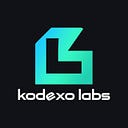GPT-4o vs. Gemini 1.5 Flash vs. PaliGemma– Who’s Winning the Competition?
The AI language model landscape is heating up, with three contenders vying for dominance: GPT-4 Omni, Gemini 1.5 Flash, and PaliGemma. Each boasts impressive features and capabilities, but which one reigns supreme? In this article, we’ll delve into a comprehensive comparison of these three models, exploring their strengths, weaknesses, and ideal applications. Who will emerge victorious in this competition?
A Comprehensive Comparison:
1) GPT-4 Omni
GPT-4 Omni is a cutting-edge language model developed by OpenAI, building upon the success of its predecessor, GPT-3.5. It boasts enhanced performance, efficiency, and capabilities.
Key Features:
- Improved language understanding and generation
- Enhanced reasoning and problem-solving abilities
- Support for multimodal inputs (text, images, and more)
- Advanced control and customisation options
Use Cases:
GPT-4 Omni is ideal for applications requiring in-depth language understanding, such as:
- Natural Language Processing (NLP)
- Chatbots and virtual assistants
- Content creation and writing
- Research and analysis
2) Gemini 1.5 Flash
Gemini 1.5 Flash is a high-performance language model developed by Google Deepmind, designed for efficient and fast processing of large-scale language tasks.
Key Features:
- Lightning-fast processing speeds
- Support for large batch sizes and high-volume tasks
- Optimised for deployment on cloud infrastructure
- Cost-effective and scalable
Use Cases:
Gemini 1.5 Flash is perfect for applications requiring rapid processing and scalability, such as:
- Large-scale text classification and sentiment analysis
- High-volume content generation and summarization
- Real-time language translation and localisation
3) PaliGemma
PaliGemma is a newer vision language model that’s gaining attention for its unique approach to language understanding and generation.
Key Features:
- Novel architecture that combines symbolic and neural AI
- Enhanced common sense and real-world knowledge
- Improved handling of nuances and context
- Potential for more accurate and informative responses
Use Cases:
PaliGemma is a promising model for applications that require:
- Advanced language understanding and generation
- More accurate and informative responses
- Handling of nuances and context
Comparison Chart of the Three Models:
Conclusion
The competition is fierce, but each model has its unique strengths and ideal applications. GPT-4 Omni excels in in-depth language understanding and customisation, Gemini 1.5 Flash shines in large-scale, high-volume tasks that demand rapid processing, and PaliGemma offers a novel approach to language understanding and generation, with the potential for more accurate and informative responses.
📌Who’s Winning the Competition?
It’s not a clear-cut victory, as each model has its niche. However, if we had to declare a winner, GPT-4 Omni would take the crown for its exceptional language understanding and customisation capabilities. Gemini 1.5 Flash is a close second, with its lightning-fast processing speeds and scalability. PaliGemma, while promising, still has room for growth and refinement.
Ultimately, the choice between these models depends on your specific needs and goals. Consider the trade-offs and select the one that best aligns with your project’s requirements. The AI language model landscape is constantly evolving, and we can’t wait to see what the future holds for these contenders.
🤔Which model do you think deserves the top spot? Do you have a favorite use case or application for each model? Share your thoughts and opinions in the comments section below!
#AIModel #ModelComparison #GPT4Omni #Gemini15Flash #PaliGemma #OpenAI #Google #Deepmind #LLM #LanguageModels
